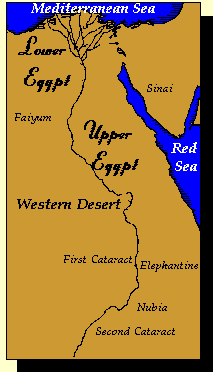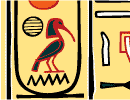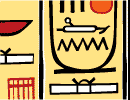Orientation


Special thanks to Carnegie Museums of Natural History for this introduction to Ancient Egypt.
Because of its location at
the crossroads of the African and Asian continents, Egypt has been an important
geographical and political power since the earliest times. In ancient
times, the boundaries of Egypt were the Mediterranean Sea to the north and
Elephantine (modern Aswan) to the south. Its eastern and western
boundaries were in the high desert on either side of the narrow strip of
Nile valley and low desert. The Nile River, the most important geographic
feature in the area, runs the length of the country, flowing from south to
north.

Ancient Egypt was divided into two regions: Upper and Lower
Egypt. Lower (northern) Egypt consisted of the Nile River's delta made
by the river as it empties into the Mediterranean. Today the Delta is
fifteen thousand square miles of alluvium (silt), which has been deposited
over the centuries by the annual flooding of the Nile. For much of Egypt's
history, this area was only thinly settled, although it was used as a
grazing area for cattle.
Upper Egypt was the long, narrow strip of ancient Egypt located south
of the Delta. This area is composed of four topographic zones: the Nile
River, the floodplain, the low desert, and the high desert. Each of these
zones was exploited differently by the ancient Egyptians.
Throughout their history, Egyptians shared a common language, world
view, and institutional structure, as well as a common territory.
Ancient Egyptians had a keen sense of the distinctiveness and superiority
of their culture, and they struggled to maintain it. Many of the rituals
they performed encouraged continuity with earlier periods of their history
that they visualized as ideal.





